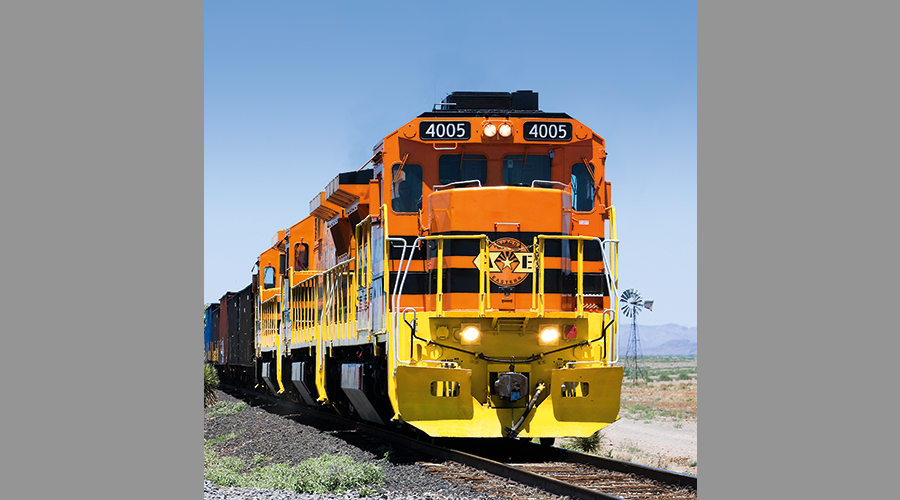Stay updated on news, articles and information for the rail industry
June 2008
Rail News: Short Lines & Regionals
Congress spurs short lines’ rebirth
By Jeff Stagl, Managing Editor
Short lines have existed since railroading’s earliest days. The Strasburg Rail Road Co., which was formed in 1832 in Strasburg, Pa., and still operates today, is the United States’ oldest.
Small railroads were financed and built within the communities they served to move freight and people. Short lines thrived through the 1800s as U.S. industry and commerce developed. By 1916, the nation’s rail system peaked at 254,000 miles, many of which were operated by nearly 700 short lines. In 1917, the American Short Line Railroad Association was formed in Washington, D.C., following the 1910 founding of the Short Line Railroad Association in New York City and 1913 formation of the Short Line Railroad Association of the Southwest.
But during the 1920s, trucking competition increased, manufacturing patterns changed and the number of short lines declined. Through the Depression, World War II and well into the 1970s — a decade when a regulated rail industry faced subsidized highway competition, bankruptcies and labor problems — the number of short lines continued to dwindle, falling to about 200.
Small-road revival
It wasn’t until Congress reorganized the Pennsylvania and New York Central Transportation Co. (Penn Central) and six other railroads into Conrail in 1976 and passed the Staggers Rail Act in 1980 that short lines began to experience a rebirth.
“The big thing was the reorganization of Penn Central. The United States Railroad Association determined they didn’t want many branch lines and selected only a few for [Conrail’s] final system plan, and that led to the formation of a dozen or so short lines,” says noted short-line historian Ed Lewis, who began his short-line career in 1963 as an assistant to the president for the Arcade & Attica Railroad, later served the Providence & Worcester, Strasburg and Lamoille Valley railroads in various roles, and in 1987 became president of the Aberdeen & Rockfish Railroad.
Meanwhile, the Staggers Act deregulated the rail industry and provided large railroads an exit strategy for unprofitable lines, says Lewis, who retired as Aberdeen & Rockfish’s president last year. Large roads then began to sell unwanted branch lines to short-line operators.
“Without a doubt, the Staggers Act was the catalyst for today’s short-line industry,” says Dave Parkinson, a 20-year short-line industry veteran, and founder, chairman and chief financial officer of the Arizona Railroad Group, which owns two short lines. “Without this enabling legislation, significant portions of our railroad network would have been abandoned.”
On track for growth
Through the 1980s and 1990s, hundreds of short lines were formed to operate branch lines totaling thousands of miles of track. Short-line trackage increased from 8,000 miles in 1980 to more than 50,000 miles 20 years later.
By 2002, the number of regionals and short lines rose to 545. At the time, small railroads operated 29 percent of all U.S. rail mileage and handled 25 percent of all carloads. Today, there are more than 550 regionals and short lines in the United States and Canada that employ about 19,000 people, and operate about 55,000 miles of track.
A significant contributor to short-line growth was computerization and automation, which enabled small railroads to operate with one- or two-person crews, says Parkinson, who was chairman and chief executive officer of short-line holding company ParkSierra Rail Group from 1988 to 2002, when it was sold to RailAmerica Inc.
“Without these productivity enhancements, such as remote-controlled locomotives, far fewer short lines would exist today,” he says.
In addition, short liners learned how to become viable business operators and partners, says Robert Parker, president and CEO of Regional Rail L.L.C., which owns East Penn Railroad L.L.C.
“Class Is view short lines as a real business now, and not as mom-and-pop operations,” says Parker, who joined the short line industry in 1991 as a RailAmerica executive, and later served as OmniTRAX Inc.’s executive vice president and chief operating officer.
Looking back over the past 50 years — a period during which half of today’s short lines came into existence — the industry’s growth can best be described as a short-line movement, says Lewis.
“I like to harken back to a slogan used to describe the importance of keeping a branch line open vs. abandonment,” he says. “‘A short line is better than no line.’” 
Keywords
Browse articles on Staggers Staggers Act short line short line railroad ConrailContact Progressive Railroading editorial staff.


 2025 MOW Spending Report: Passenger-rail programs
2025 MOW Spending Report: Passenger-rail programs
 Gardner steps down as Amtrak CEO
Gardner steps down as Amtrak CEO
 Guest comment: Oliver Wyman’s David Hunt
Guest comment: Oliver Wyman’s David Hunt
 Women of Influence in Rail eBook
Women of Influence in Rail eBook
 railPrime
railPrime








